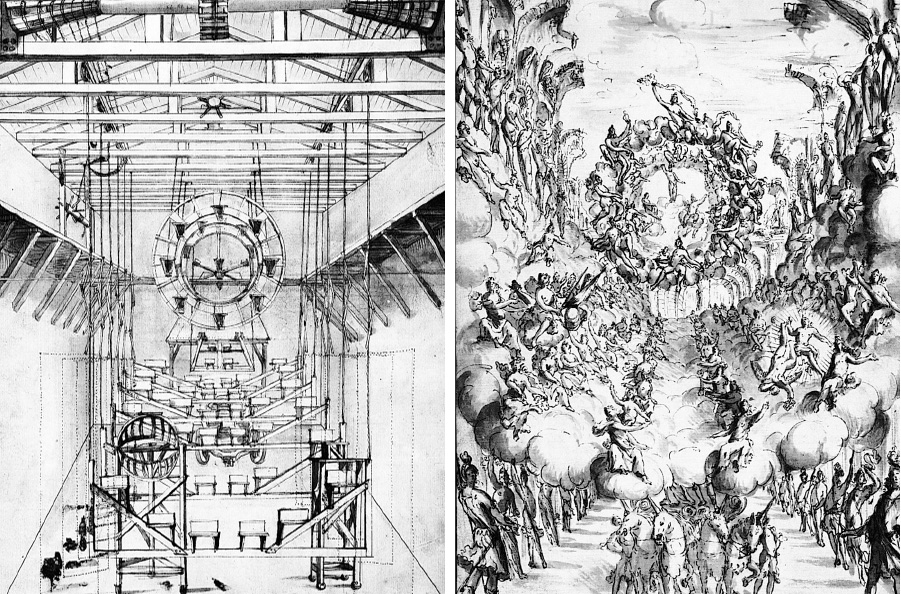3 | Opera
Opera — drama presented in music, with the characters singing instead of speaking — is often called the most characteristic art form of the Baroque period. Baroque opera combined many different arts: not only music, drama, and poetry but also dancing, highly elaborate scene design, and spectacular special effects. Ingenious machines were contrived to portray gods descending to earth, shipwrecks, volcanos, and all kinds of natural and supernatural phenomena. Scene designers often received top billing, ahead of the composers.
Opera began in Florence; the early operas were court entertainments put on to celebrate royal weddings and the like. But an important step was taken in 1637 with the opening of the first public opera theater. Opera soon became the leading form of entertainment in the whole of Italy. By the end of the century, seven opera houses in Venice fulfilled much the same function as movie theaters in a comparable modern city (around 145,000 people).
Opera was a perfect answer to the general desire in the early Baroque era to portray individual emotion. Opera provided a stage on which the single individual could step forward to express his or her feelings in the most direct and powerful fashion. Indeed, composers felt a need to relieve the constant emotional pressure exerted on their characters by the ever-
